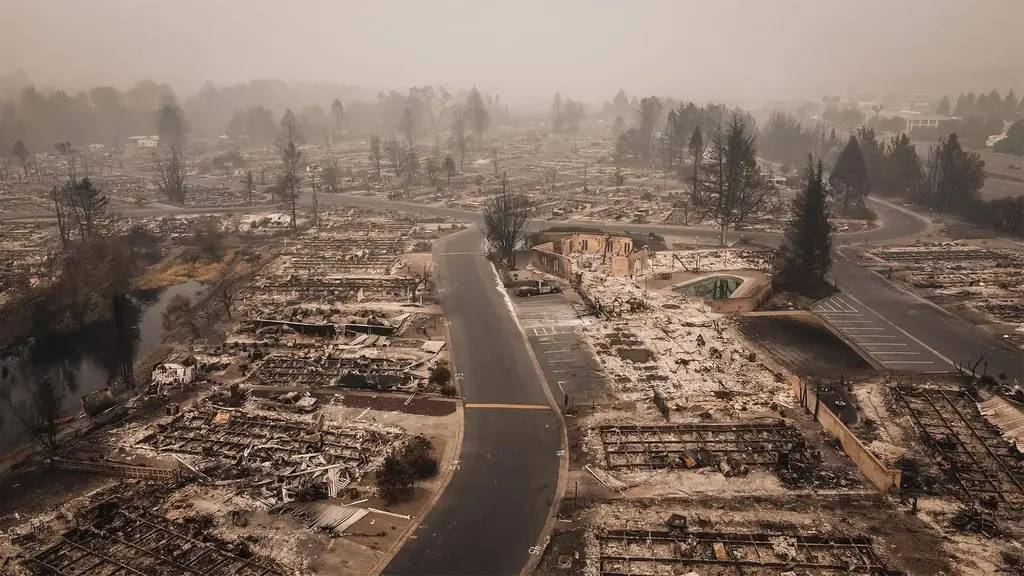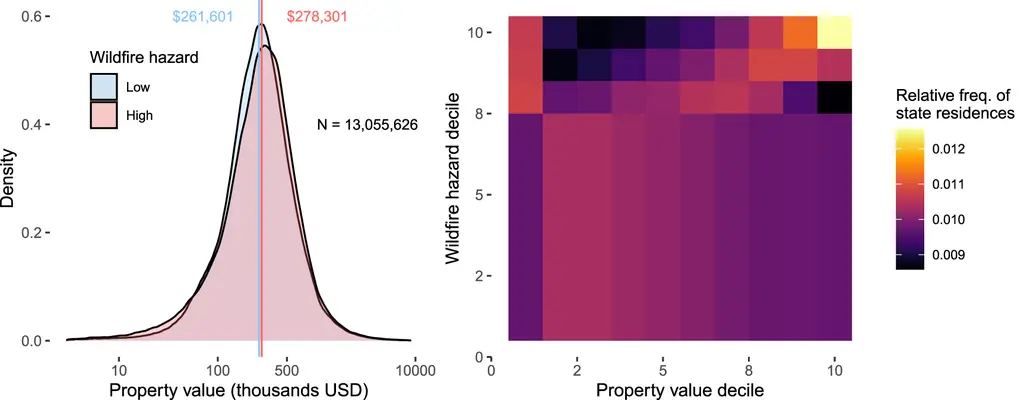According to [a new study] published today (May 26) in Environmental Research Letters( https://doi.org/10.1088/1748-9326/ac60d7 ) , the 10% of the most valuable homes in the western United States are 70% more likely to be located in high mountain fire hazard areas than medium value properties**

Wildfire devastation. Credit: IOP Publishing
Using sophisticated spatial data, the research team from resources for the future, an independent research institution in Washington, D.C., studied residential buildings in the western United States and the relative sharing links exposed to mountain fires. The team studied the location, value, community characteristics and distance from previous wildfires.
Research shows that the harm and impact of recent mountain fires are disproportionately borne by high-income, white and elderly communities and owners of high-value real estate. However, the study also showed that exposure to wildfire hazards was disproportionate among the lowest value homes and Native American communities in the western United States.


According to the report, the owners of high-income, white and elderly communities and high-value houses bear a disproportionate share of the harm and impact of recent mountain fires. However, the study also found that the risk of mountain fires was disproportionate among low-value homes in the western United States and Native Americans.
Exposure to wildfire hazards is often closely related to benefits such as access to scenery, entertainment opportunities and proximity to nature. Therefore, mountain fire exposure is different from other man-made hazards, such as pollution or waste facilities, which have an overwhelming impact on poorer communities.
In recent years, mountain fires in the western United States have increased dramatically due to climate change and past forest and fire management practices. Policymakers are weighing how to allocate the costs of wildfire suppression and mitigation between households in low and high disaster areas.
Matthew wibbenmeyer, the magazine's lead author, commented: "despite increasing attention to the distribution of environmental and climate related risks among socio-economic groups and its relevance to the current policy debate related to mountain fires, the distribution of mountain fire hazards has not been well understood before.".
Co author Molly Robertson added: "mountain fire mitigation policies that provide financial assistance to high-risk areas may subsidize wealthy families. However, mountain fire risk areas are very diverse, so addressing issues related to the increased costs of mountain fire risk may require a geographically targeted approach, focusing on reducing the burden on the most vulnerable communities".